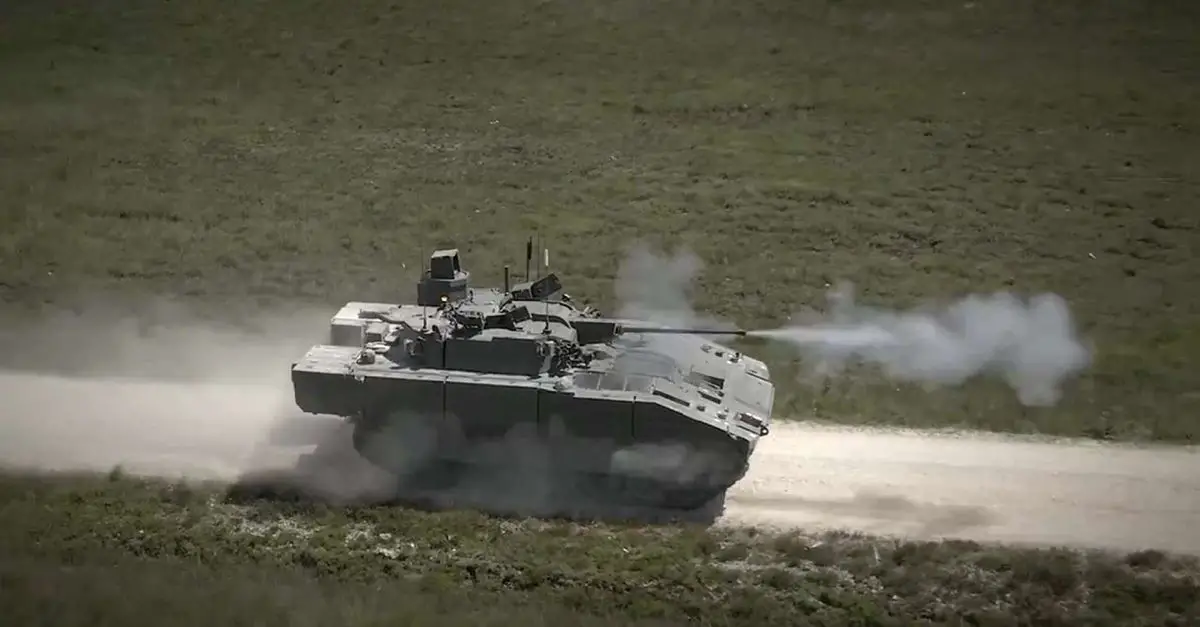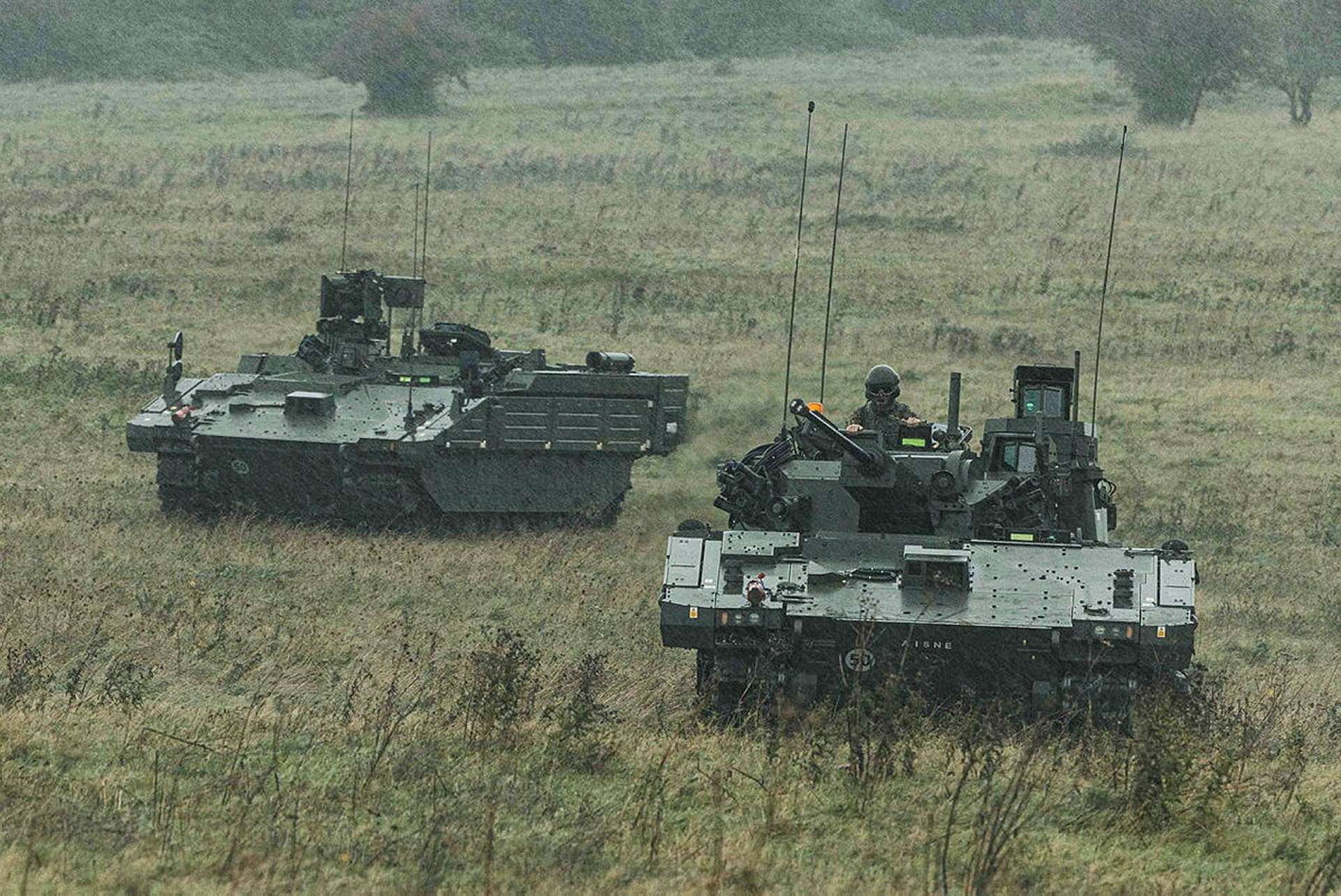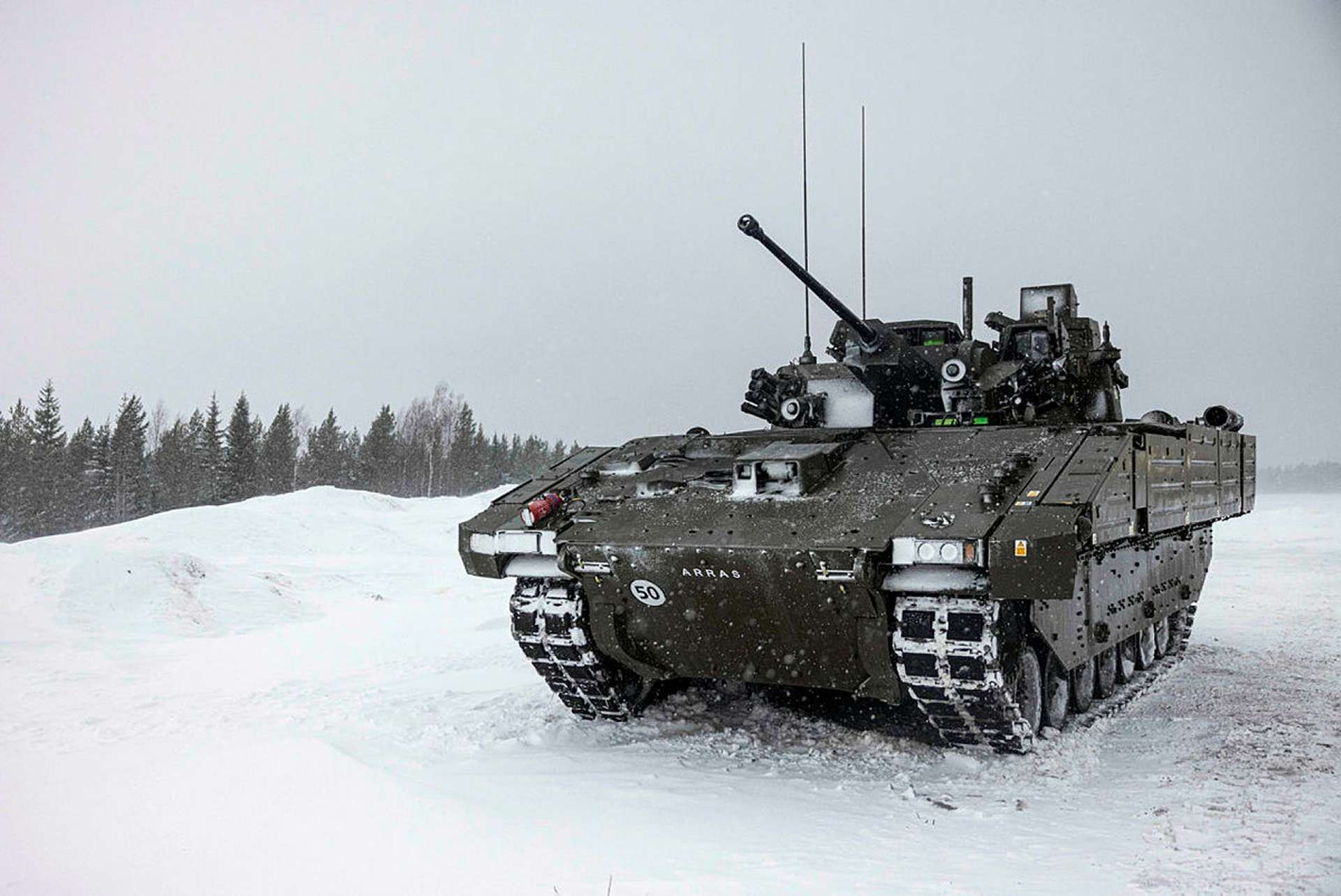Breaking News
British Army achieves first firing-on-the-move test with Ajax infantry fighting vehicle.
On August 6, 2024, the British Army reported the completion of the latest trials for the Ajax armored fighting vehicle. Following cold weather trials in Sweden, military crews in the UK successfully conducted the first firing-on-the-move exercise. As of early 2024, over 150 Ajax vehicles have been produced, with ongoing efforts to rectify earlier issues and accelerate delivery. The British Army plans to deploy operationally ready Ajax vehicles within its units by the end of the year, starting with the Household Cavalry Regiment.
Follow Army Recognition on Google News at this link

Following cold weather trials in Sweden, military crews in the UK successfully conducted the first firing-on-the-move exercise with the Ajax armored fighting vehicle. (Picture source: British Army)
The Ajax, formerly known as the Scout SV (Specialist Vehicle), is a group of six armored fighting vehicles being developed by General Dynamics UK for the British Army. It is intended to be the Army's first fully digitized platform. The core Ajax variant serves as a reconnaissance and strike vehicle, featuring a CT40 40mm cannon and advanced ISTAR capabilities. The Ares variant is a troop-carrying reconnaissance vehicle designed to transport specialist troops, providing overwatch and support for dismounted operations.
The Athena variant functions as a command and control vehicle, equipped with communication and information processing systems for battlefield management. Apollo is an equipment support variant for battlefield repairs, while Atlas is dedicated to recovering damaged or disabled vehicles. The Argus variant focuses on engineering reconnaissance, assessing battlefield environments to aid in planning and executing engineering tasks.
Derived from the ASCOD armored fighting vehicles used by the Spanish and Austrian Armed Forces, the Ajax was originally developed in the early 1990s by Steyr-Daimler-Puch Spezialfahrzeug and Santa Bárbara Sistemas. These companies were later acquired by General Dynamics in the early 2000s. In 2010, General Dynamics UK won the Future Rapid Effect System contract, beating BAE Systems' CV90 proposal. The contract aimed to replace the British Army's Combat Vehicle Reconnaissance (Tracked) family, which had been in service since 1971.

The AJAX program aims to replace the British Army's Combat Vehicle Reconnaissance (Tracked) family, which had been in service since 1971. (Picture source: British MoD)
Development milestones for the Ajax included passing the Preliminary Design Review in December 2012 and the Common Base Platform Critical Design Review in late 2013. By June 2014, the Protected Mobility Reconnaissance Support (PMRS) variant had completed its Critical Design Review. A "Mobile Test Rig" underwent rigorous testing, including cold weather and operational and tactical mobility trials. In 2014, the first pre-production prototype of the PMRS variant was unveiled at General Dynamics' facilities in Spain.
Initially, the Ajax was to be procured in multiple blocks totaling 1,010 vehicles, with Block 1 covering Scout Reconnaissance, PMRS APC, and Repair and Recovery variants. However, by September 2014, the Ministry of Defence dropped plans for Block 3 and had no plans for Block 2. On September 3, 2014, the British Government ordered 589 Scout SV vehicles at a cost of £3.5 billion, excluding VAT. The ordered variants included 245 turreted Ajax variants, 256 PMRS variants, and several other configurations designed for different operational roles.
Manufacturing and design work for the Ajax involves General Dynamics UK, General Dynamics Santa Bárbara Sistemas, and Lockheed Martin UK, which designs and manufactures the new turret and fire control system for the Reconnaissance variant. The turret ring, with a diameter of 1.7 meters, provides ample workspace, and the vehicle is equipped with an advanced ISTAR package for enhanced surveillance and targeting capabilities.

This family of armored fighting vehicles consists of six variants: the Ajax infantry fighting vehicle, the Arex armored personnel carrier, the Athena command and control vehicle, the Apollo support vehicle, the Atlas recovery vehicle, and the Argus engineering vehicle. (Picture source: British MoD)
The Ajax family project supports 400 jobs at General Dynamics UK's facilities in South Wales and an estimated 4,000 jobs in the British supply chain. Despite initial plans for delivery in 2017, delays have impacted the project. Trials were halted in November 2020 due to excessive noise and vibration, leading to a suspension of dynamic testing and training in September 2021.
Limited trials resumed in October 2022, with extended trials potentially lasting until early 2025. The Ministry of Defence stated in March 2023 that full operating capability is expected between October 2028 and September 2029, contingent on the army's training and conversion to the new vehicles.
The development of the Ajax has encountered numerous setbacks, including design and testing issues, and problems with noise and vibration that affected the health of test crews. These issues led to significant delays and cost overruns, with the project now costing around £5.5 billion. In response to these challenges, the Ministry of Defence commissioned a senior legal figure to review the program's flaws and ensure all lessons are learned.

The British Ministry of Defence stated in March 2023 that full operating capability is expected between October 2028 and September 2029, contingent on the army's training and conversion to the new vehicles. (Picture source: British MoD)
In early 2021, the Defence Select Committee issued a critical report on the state of the Army's armored vehicle program, including the Ajax, which had spent hundreds of millions of pounds with limited progress. Some defense experts questioned whether Ajax would ever enter service. In June 2022, a report by the UK Parliament's Public Accounts Committee found a "litany of failures" causing delays and advised that the Ministry of Defence needed to resolve the issues or scrap the project to prevent compromising national security.
Despite these challenges, there have been recent indications of progress. In February 2023, Defence Secretary Ben Wallace described the program as having "turned a corner" and being "back on track." The Ministry of Defence resumed payments to General Dynamics Land Systems UK, which had been halted for over two years, and assured that the program remains within its originally approved budget level. Additionally, Tankfest 2024 at The Tank Museum in Bovington, Dorset, provided the first public demonstration of the new Ajax and Ares armored fighting vehicles. This event also highlighted the Ajax program's aim to modernize the British Army's fleet with a new family of armored fighting vehicles.


























